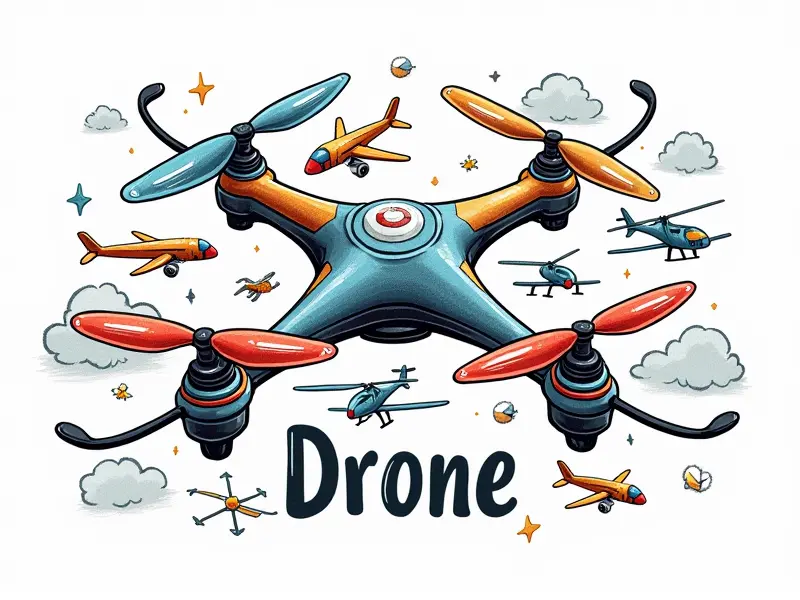RC helicopter with gyroscope?

Do RC Helicopters Need Gyroscopes?
When it comes to flying remote-controlled (RC) helicopters, one of the most crucial components is the gyroscope. A gyroscope, or gyro for short, plays a pivotal role in stabilizing and controlling the helicopter's flight dynamics. Without a reliable gyro, achieving smooth and stable flights becomes challenging, if not impossible.
Why Every RC Heli Needs a Good Gyro
The primary function of a gyroscope is to maintain stability by counteracting unwanted movements such as pitch, roll, and yaw. This ensures that the helicopter remains balanced and responsive during flight maneuvers. A well-calibrated gyro significantly enhances the pilot's control over the aircraft, making it easier to perform complex aerobatics.
Understanding Gyro Functionality in RC Helis
Gyroscopes work by detecting changes in orientation and applying corrective forces to maintain stability. In an RC helicopter, this means that when the heli tilts or rotates unexpectedly, the gyro detects these movements and sends signals to adjust the tail rotor and main rotor accordingly.
How Gyros Work
- Sensing: The gyroscope senses changes in angular velocity around its axis.
- Processing: It processes this information to determine necessary corrections.
- Actuation: Signals are sent to the servos or electronic control systems to correct any instability.
Choosing the Right Gyroscope for Your RC Helicopter
Selecting the appropriate gyro is crucial for optimal performance. Factors such as helicopter size, flight style, and desired level of stability should be considered when choosing a gyroscope.
Types of Gyros
- Analog Gyros: These are traditional mechanical devices that provide basic stabilization.
- Digital Gyros: Advanced electronic units offering superior accuracy and reliability.
- Multiplex Gyros: Capable of handling multiple channels for enhanced control.
Maximizing Stability with RC Helicopter Gyros
To get the most out of your gyro, proper tuning is essential. This involves adjusting parameters such as gain and dampening to suit specific flight conditions and personal preferences.
Tuning Tips
- Start Low: Begin with conservative settings and gradually increase until optimal performance is achieved.
- Test in Flight: Make adjustments during actual flights to see how changes affect stability.
- Consult Manuals: Refer to manufacturer guidelines for recommended starting points.
The Role of Gyroscopes in RC Helicopter Performance
A well-tuned gyro can dramatically improve the overall performance and maneuverability of an RC helicopter. It allows pilots to execute precise maneuvers with greater ease, enhancing both safety and enjoyment.
Enhanced Control
- Better Responsiveness: The heli reacts more quickly to control inputs.
- Smaller Corrections: Less input is needed for stable flight.
Best Gyro Settings for RC Helicopters
Finding the ideal settings depends on various factors including helicopter model, pilot skill level, and intended use. Common settings include gain, dampening, and pitch curve adjustments.
Common Settings
- Gain: Controls how aggressively the gyro corrects instability.
- Dampening: Reduces oscillations by limiting over-correction.
- Pitch Curve: Adjusts pitch response for smoother transitions.
How Gyros Improve RC Helicopter Flight
The integration of a high-quality gyro into an RC helicopter system can transform the flying experience. It not only stabilizes flight but also enhances maneuverability, making it easier to perform advanced aerobatics and maintain control in challenging conditions.
Benefits
- Better Stability: Reduced wobble and drift during flight.
- Increased Precision: More accurate execution of maneuvers.
- Improved Safety: Decreased risk of crashes due to instability.
Essential Guide to RC Helicopter Gyros
This guide provides a comprehensive overview of gyroscope functionality, selection criteria, and tuning techniques for optimal performance in RC helicopters. Whether you're a beginner or an experienced pilot, understanding the role of gyros is key to mastering your aircraft.
Key Takeaways
- Selecting the Right Gyro: Choose based on helicopter size and intended use.
- Tuning for Performance: Adjust settings according to flight conditions.
- Maintaining Stability: Regularly check and fine-tune gyro settings.
Tips for Tuning RC Helo Gyros
Proper tuning is essential for achieving the best performance from your gyroscope. Here are some practical tips to help you get started:
Initial Setup
- Start with Manufacturer Recommendations: Use suggested settings as a baseline.
- Test in Controlled Conditions: Begin tuning indoors or in calm weather.
Advanced Tuning
- Adjust Gain Gradually: Increase gain slowly to avoid over-correction.
- Balance Dampening: Find the right balance between stability and responsiveness.
- Monitor Flight Behavior: Observe how changes affect flight dynamics.
Mastering RC Helicopter Flight with Gyros
Mastery of gyro tuning is a critical step towards becoming an expert RC helicopter pilot. By understanding the principles behind gyroscope functionality and applying effective tuning techniques, you can achieve unparalleled stability and control in your flights.
Conclusion
The integration of a high-quality gyroscope into your RC helicopter setup is essential for achieving smooth, stable, and responsive flight performance. Whether you're a novice or an experienced pilot, mastering the art of gyro tuning will significantly enhance your flying experience and allow you to perform advanced maneuvers with ease.

